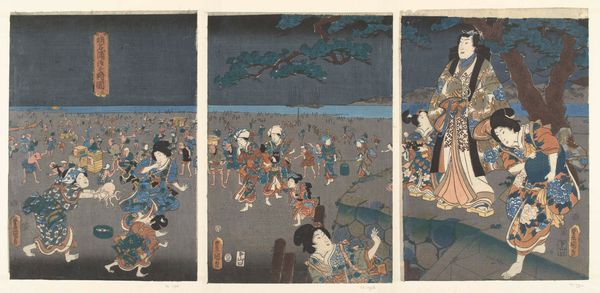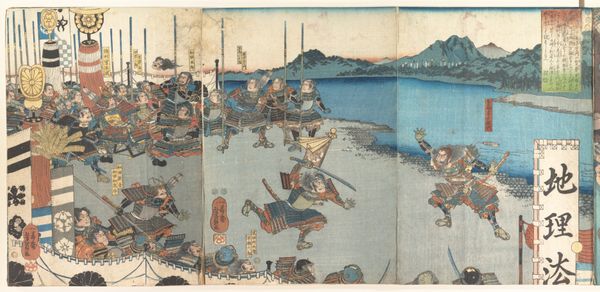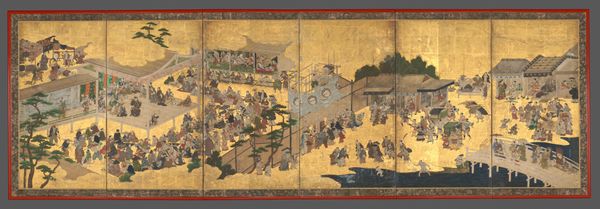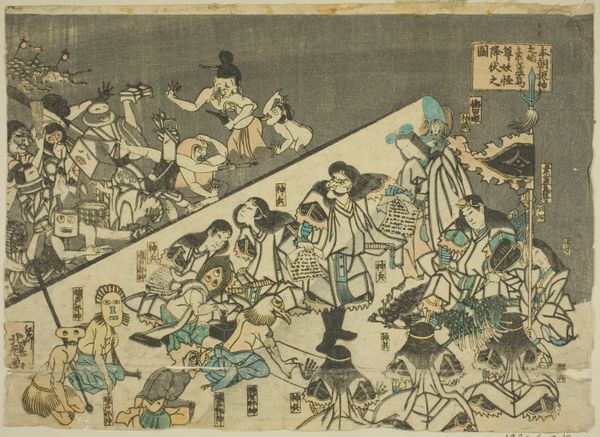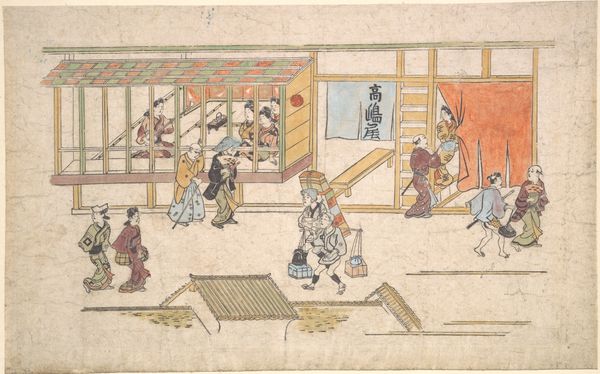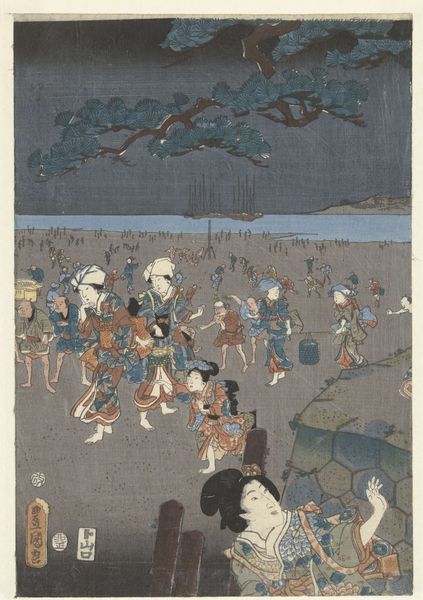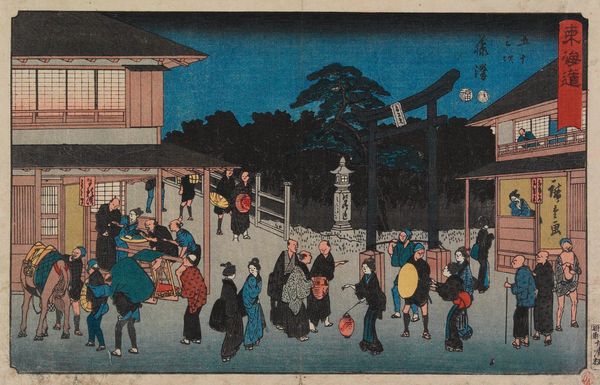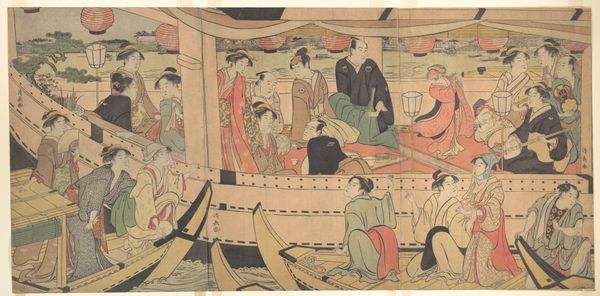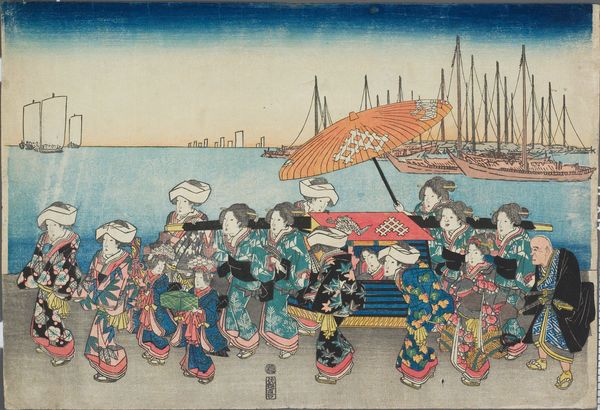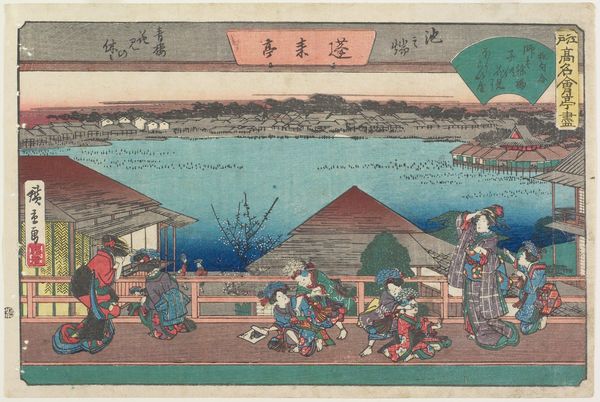
Boys Play-acting a Daimyo Procession 1800 - 1868
0:00
0:00
print, etching, woodblock-print
#
water colours
#
narrative-art
# print
#
etching
#
asian-art
#
landscape
#
ukiyo-e
#
woodblock-print
#
genre-painting
Dimensions: 14 5/8 x 50 in. (37.1 x 127 cm)
Copyright: Public Domain
Curator: What a charming scene! My first impression is of joyous, youthful energy. There's an almost naive quality to the rendering, with the procession seemingly overflowing with youthful exuberance. Editor: Indeed. The artwork you're observing is titled "Boys Play-acting a Daimyo Procession" by Utagawa Kuniyoshi. It's a woodblock print, dating sometime between 1800 and 1868, reflecting life in the Edo period. Now, considering the political context, how might children mimicking such an elaborate procession serve as social commentary? Curator: That's fascinating. Considering Kuniyoshi’s socio-political views and use of satire, these boys acting out a Daimyo procession – essentially local feudal lords displaying their power – becomes a playful, but pointed, commentary on the pomp and perhaps even the futility of such displays of authority. Look at the performance of masculinity embedded within the scene; is Kuniyoshi hinting at the constructed, perhaps even fragile, nature of authority? Editor: I agree; it certainly adds another layer to our understanding. Ukiyo-e prints like this were not just decorative; they offer insight into the values, hierarchies, and even criticisms circulating within the society of that time. Do you see any institutional critiques at work here? Curator: Well, thinking about it now, it speaks volumes about how the visual culture absorbed, reflected, and possibly subverted power structures within the feudal system. The child actors remind us of the theatricality inherent to politics, of social roleplay in governance. I do find that quite powerful. Editor: Definitely. This artwork reminds us that representations of children weren't always innocent. They could carry quite a subversive message in a society bound by strict social rules, adding a humorous yet poignant commentary. I'm always interested to study how Japanese culture reflects social tension and interplay. Curator: Exactly. This really challenges us to consider the role of children and art not just as representations, but as active participants within historical power dynamics. Sobering and powerful.
Comments
No comments
Be the first to comment and join the conversation on the ultimate creative platform.
